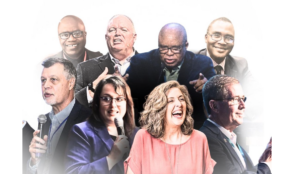If you are a United Methodist coming late to our current conversation, you may not be aware of how our structure fits together. Here is a brief UMC primer on how we are connected, from your local United Methodist church to this month’s gathering in St. Louis.
The local church is the heart and soul of Methodism and the basic unit of our structure. We are not a “congregational” tradition like, for instance, the Southern Baptist Convention. We are connected to each other and our decisions impact one another.
Every United Methodist church is part of a district. Districts gather three or four times a year and are presided over by District Superintendents, who function as an extension of the Bishop’s office.
Every district is part of an Annual Conference, a term representing both a geographical area and an annual gathering. An Annual Conference gathering is made up of equal parts laity and clergy who vote on matters important to their connection. Both the gathering and the geographical area are presided over by a Bishop.
Every Annual Conference belongs to a jurisdiction. A jurisdiction is a larger geographical area that encompasses a number of annual conferences. Jurisdictional conferences meet every four years. The most important thing jurisdictional conferences do is elect bishops. There are also what is known as Central Conferences, areas beyond the U.S., including Africa, Europe and the Philippines (don’t ask me about South America; it’s complicated).
The Central and Jurisdictional Conferences, along with a host of boards and agencies, together make up the General Conference. Every four years, delegates from every conference area come together to discuss the structure, doctrine and missional focus of the UMC. The General Conference is presided over by a Council of Bishops but decisions are made by the body itself, not by the bishops. Our last regular General Conference was held in 2016. Our next regular conference will be in 2020. The one held this year is a “special session of the General Conference.” This has only happened one other time since the UMC formed in 1968.
Ours is a global connection. Remember that we’ve said that the local church is the basic unit of our structure. “Connection” ends up being an important term for how all our churches and conferences relate. Being connectional means that none of us who lead in the UMC can up and make decisions in a vacuum. We belong to a global family held together by a covenantal structure. As with families, denominations (and churches, and businesses, and pretty much anything else that involves people) have huge disagreements and personality conflicts. And like families, no one really understands yours except the ones who are in it. Our connection is deep and personal.
What makes a family is that connection. It is that intangible you can’t quite define but when it is there, you know it. The United Methodist Church was designed to be like that. When we talk about the places where we disagree and what is on the table at this year’s General Conference, that question of connection is beneath all the other questions.
Are we connected? If we are not, then everyone is free to have their own opinion and go their own way. If we are not connected, at least one of the plans (ironically called “The One Church Plan”) makes sense. It fits a congregational structure. But if we are connected then whether we end up agreeing or not, we are required to live respectfully with one another inside a set of expectations. If we can’t do so, then the right step is to step out.
That question of connection and accountability is at the heart of the current crisis within the UMC. The most volatile issue to be discussed (and has been for forty years) is human sexuality and its connection to marriage and ordination. We have reached an impasse but more than an impasse, actually. Those who disagree with our current statements on human sexuality have already chosen to ignore our Book of Discipline. Others have long since set aside orthodox tenets like the exclusive nature of Jesus as the Messiah and the global nature of the gospel. These are not secrets. People speak openly about their disagreement with big chunks of our core theology. That certainly calls into question the integrity of continuing on as if we are connected theologically when in fact, we are not.
In order to maintain our connection, we must restate our covenant. After decades of discussion, the issues that divide us must be finally, peacefully decided so we can move on. The disruption to ministry and souls demands a decision this time around.
Are we connected … or not? In other words, are we accountable to one another or not? The answer to that question determines how we define the local church, the global church and what exactly makes us Methodist.
Part two focuses on the four plans being considered at GC2019.
Part three focuses on the grace that needs to be part of whatever decision is made.








